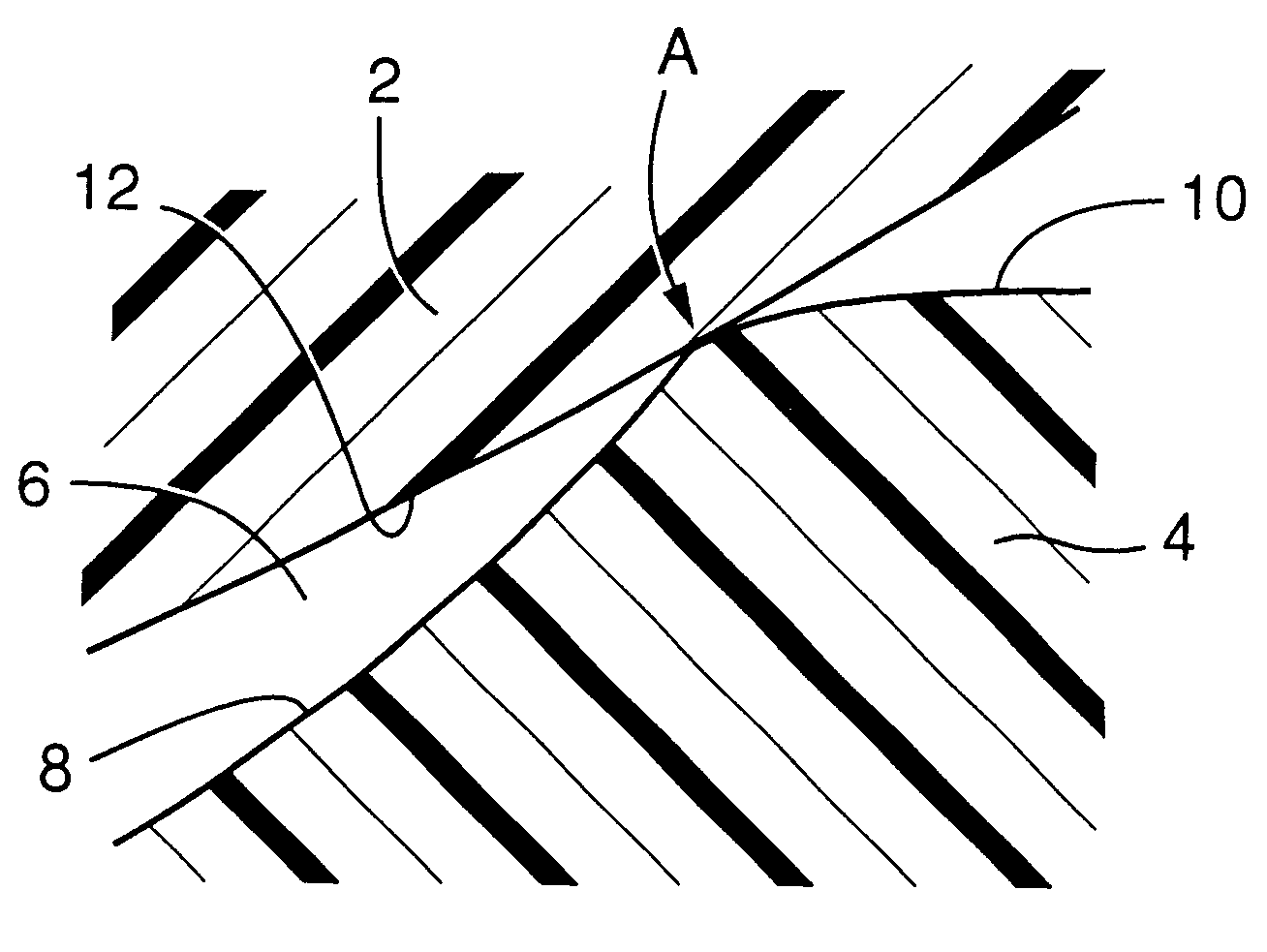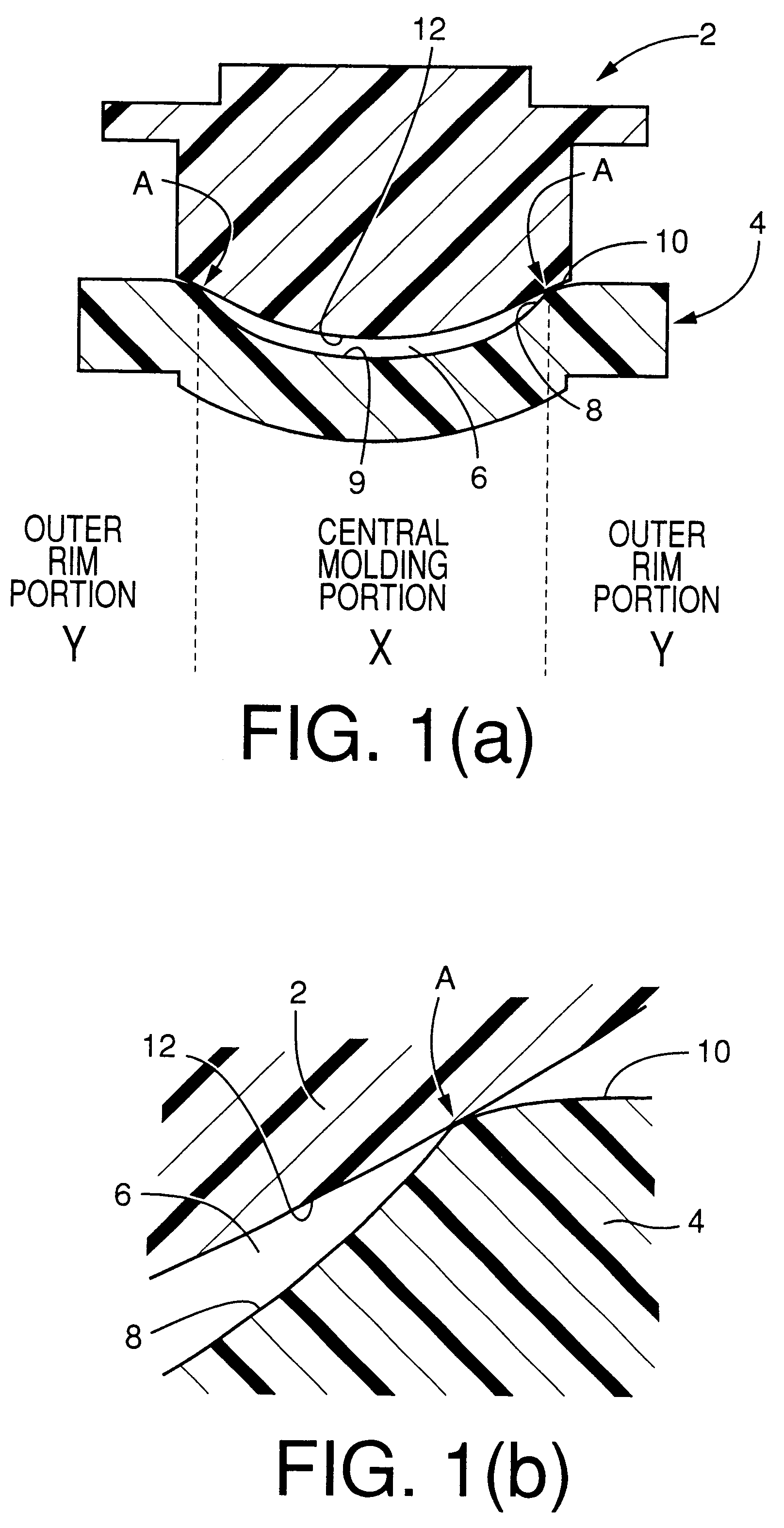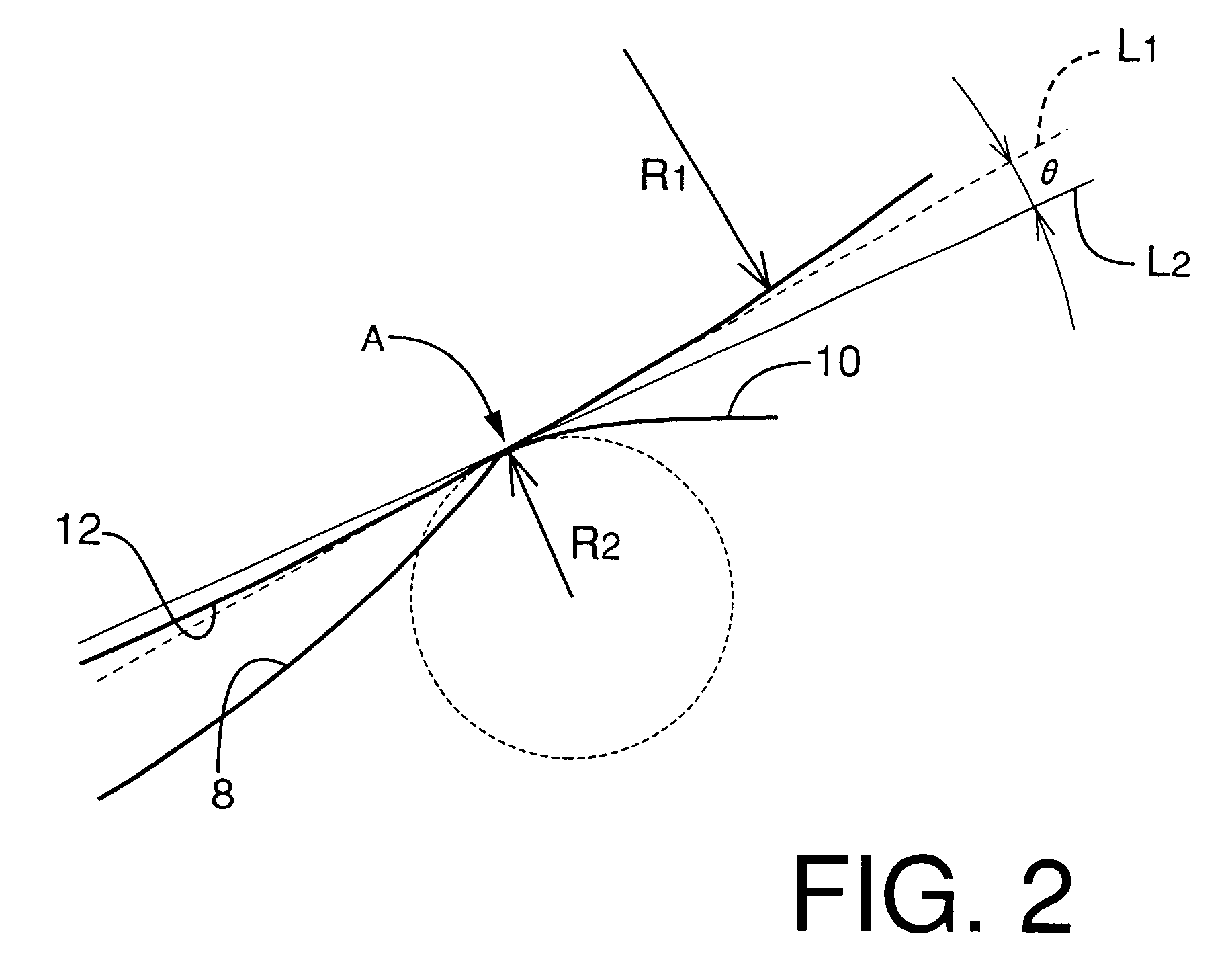Mold assembly for forming ophthalmic lens
a technology of ophthalmic lenses and mold cavities, which is applied in the direction of foundry moulding apparatus, instruments, foundry patterns, etc., can solve the problems of unplanned edge profile of ophthalmic lenses to be obtained, unfavorable mold cavity configuration with respect to nominal design,
- Summary
- Abstract
- Description
- Claims
- Application Information
AI Technical Summary
Benefits of technology
Problems solved by technology
Method used
Image
Examples
Embodiment Construction
The mold assembly consisting of the male mold 2 and the female mold 4 shown in FIGS. 1 and 2 were formed of polypropylene in a known molding process. Described in detail, the male and female molds 2, 4 were configured such that the contact lens to be obtained has a diameter of 13.5 mm, and a rear optical surface having a radius of curvature of 7 mm and a front optical surface having a radius of curvature of 8 mm. The rear optical surface is given by the mold surface 12 of the male mold 2, and the front optical surface is given by the lens-forming region 9 including the concave portion 8 of the female mold 4. Further, the radius of curvature R.sub.2 of the convex portion 10 of the female mold 4 at the radial position A was 0.2 mm, while the angle .theta. formed by the tangent lines L.sub.1 and L.sub.2 was 5.degree..
In the meantime, a liquid composition for a contact lens was prepared as the polymeric lens material 26, which composition included 100 parts by weight of 2-hydroxyethyl m...
PUM
| Property | Measurement | Unit |
|---|---|---|
| diameter | aaaaa | aaaaa |
| diameter | aaaaa | aaaaa |
| diameter | aaaaa | aaaaa |
Abstract
Description
Claims
Application Information
 Login to View More
Login to View More - R&D
- Intellectual Property
- Life Sciences
- Materials
- Tech Scout
- Unparalleled Data Quality
- Higher Quality Content
- 60% Fewer Hallucinations
Browse by: Latest US Patents, China's latest patents, Technical Efficacy Thesaurus, Application Domain, Technology Topic, Popular Technical Reports.
© 2025 PatSnap. All rights reserved.Legal|Privacy policy|Modern Slavery Act Transparency Statement|Sitemap|About US| Contact US: help@patsnap.com



